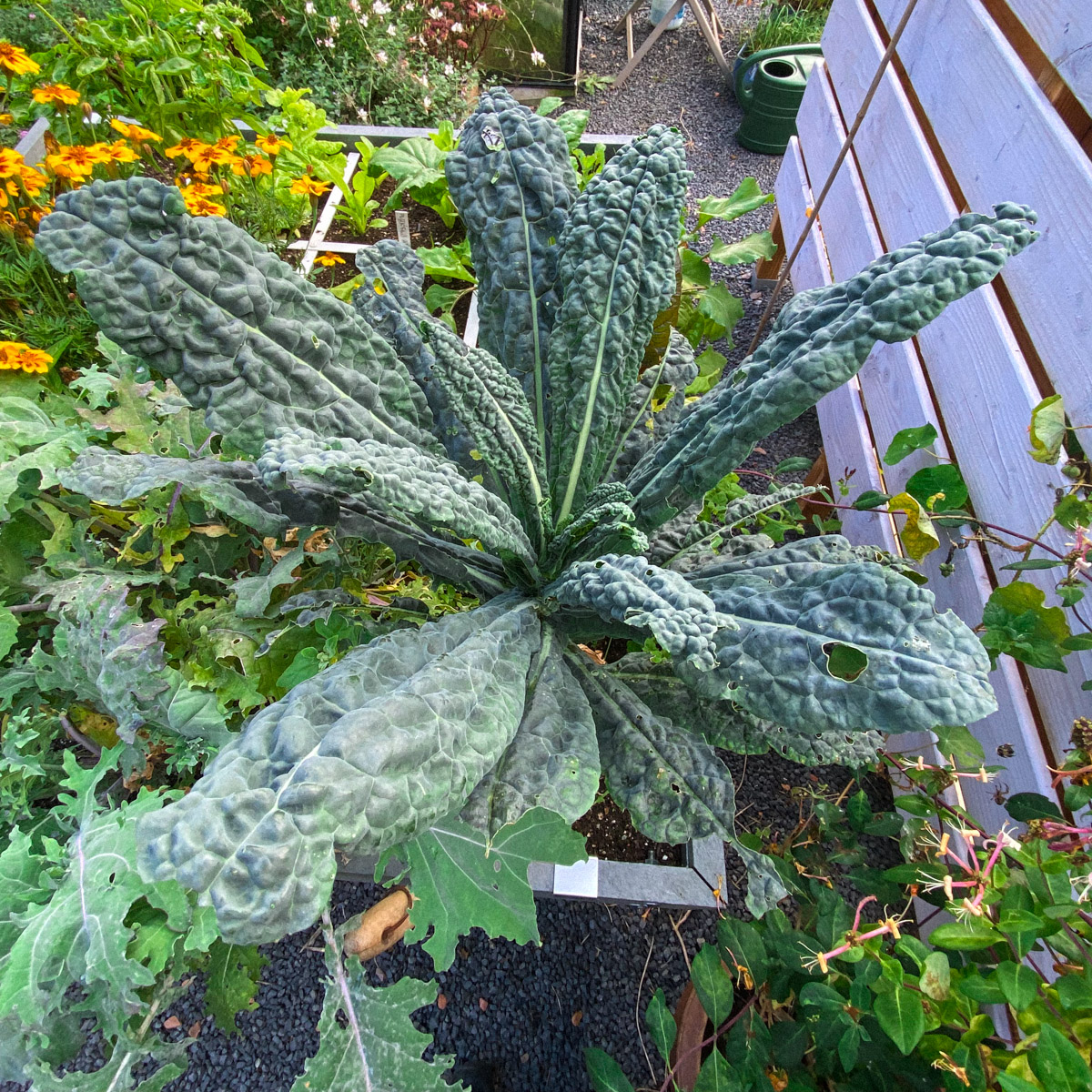A walk through the Planty Garden in early September

Take the weather here in Holland: a really cold spring, 33°C in June, flooding in July, and generally more rain and lower temperatures than we're used to.
But for a vegetable garden, it's not that bad. We humans just have a few extra challenges on our plates 😉
Here, let me show you my garden:
My August garden box



May, June and July garden boxes
But a lot of plants have stuck it out. Like the Romano pole beans and bacon beans. They're producing a lot this year. And thanks to the heavy rainfall, they stay crunchy.
There are some ugly leaves here and there, but I can also see new shoots, flowers and beans. For now, we'll just keep harvesting.

Cucumbers, tomatoes and courgettes
Cucumbers
The cucumbers continue to flower and new fruits are popping up all over:

Zucchini
The zucchini plants are still growing up the trellis. Every few days, I have to tie them up a bit higher:


You can find tips for dealing with powdery mildew - and how to identify it - here.
For me, it's too much of a hassle to do remove affected zucchini and pumpkin leaves. Besides, plants with mildew often can survive a long time. Usually until the really cold weather sets in. And the fruits themselves aren't affected.
Tomatoes
Tomatoes can't get enough of the sun. Literally. This year, it's been so damp and cloudy, the tomatoes just aren't happy.
They ripen more slowly, taste less sweet, and are overwhelmed by blight.
Read more what tomato blight is and what you can do about it here.
I cut off all the affected leaves. That's why most of my tomato plants look pretty naked now, apart from a few leaves and tomatoes. Fingers crossed that those last fruits still ripen.

Still, I removed a few of the blighted plants and put the tomatoes in the windowsill to ripen.
That's more than enough for a big jar of tomato sauce:

If you want as many ripe tomatoes as possible, then now's the time to prune the tops. The plant will put all its energy into ripening the tomatoes that are already there, instead of producing new flowers and fruits.
Topping is easy: just cut the main stem off above the highest bunch of tomatoes. And leave one leaf at the very top if you can:

Baby pumpkins
The pumpkins are thriving. They're getting even bigger than last year. More toddler than baby 😊

Sugar snaps and snow peas
But the plants aren't as strong in the fall and they produce flowers and pods faster.
Be sure you harvest right away. Their main purpose in life is to produce seeds - peas - before winter hits. So the peas grow faster inside the pods, which isn't exactly what you want for your snow peas. But don't worry: the peas are delicious.

Beets and carrots
They grow fast, look beautiful, and are super tasty and crunchy.
I sowed these ones in early July:


Lettuce, chard and other leafy greens
My loose leaf lettuce can't get enough of the wet weather:



But butterflies and caterpillars don't care whether your garden box is on legs or on the ground. That's why the dino kale has some holes.
But you'll see: it'll recover and look beautiful again soon enough. Dino kale is super strong.

Keep your vegetable patches full
Don't be too shy about removing plants. If most look ready to harvest, I'll pick them and the stragglers too. Just to empty out the patch.


Starting a garden in September: what can you still sow?

They can handle cold weather, so I'll leave them alone for a while. With a bit of luck, I'll harvest them all winter. Great for stir-frying 😀


Still want to get started?
Take a look at this MM-Airbak. I sowed it at the end of August last year. About two weeks later, it looked like this:





